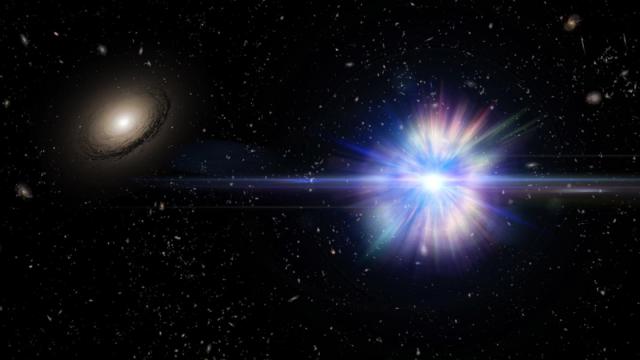It’s easy to imagine the universe as an endless sea of stars, but that’s a biased, Earthly perspective. If we could zoom very far out, we’d see bright cosmic clusters like our Milky Way, and between them, unimaginably vast stretches of empty intergalactic space.
Artist’s concept of a Type Ia supernova exploding in the region between galaxies.
Well, not completely empty: Sometimes, an ill-fated star gets flung from its home to wander that intergalactic void. That, at least, is what appears to have happened to three supernovae imaged by the Hubble Space Telescope several years ago, and more recently by a team of Berkeley researchers using the Canada-France-Hawaii Telescope. Exiled from the galaxies that birthed them, these curious cosmic orphans, which are described in a forthcoming paper in the Astrophysical Journal, spent eons living in unimaginable darkness, before finally exploding to smithereens.
“We have provided the best evidence yet that intracluster stars truly do explode as Type Ia supernovae,” said Berkeley astronomer and lead study author Melissa Graham in a statement, “and confirmed that hostless supernovae can be used to trace the population of intracluster stars, which is important for extending this technique to more distant clusters.”
While stars typically live out their lives within a single galaxy, every now and then, a gravitational disturbance will wrench a stellar body out of its normal orbit and send it flying off at breakneck speeds. Indeed, this process is thought to disrupt up to 15 per cent of the stars within large galactic clusters. In most cases, the displaced stars remain gravitationally bound to the cluster as a whole, scattered throughout the cosmic hinterlands. In densities about a millionth of what we see from Earth, these wanderers are too faint for astronomers to observe until they explode at the end of their lives.
The scientists behind the recent study are now searching intragalactic space for stellar entrails, in order to begin censusing the population of unseen cosmic nomads. Rare as they may be, these lonely stars offer important insights into the formation and evolution of galaxy clusters throughout the universe.
If exiled stars aren’t unsettling enough, consider that any of these cosmic nomads could harbour worlds, perhaps even life. In his novel Against a Dark Background, science fiction author Ian Banks described life on Golter, a planet whose star lies a million light years from its nearest neighbour. Anyone standing on the surface of Golter would have peered up at night into a completely starless sky. It’s unsettling, to say the least, to imagine that an advanced society living on such a world would have nowhere else to go when its star eventually failed.
Suddenly, I find myself very grateful for our place in the universe.
